1795-1804: Monomaniacs
By:
October 13, 2010
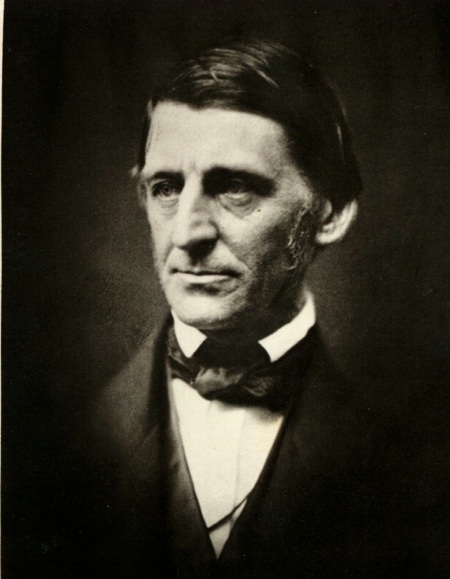
Men and women born from 1795-1804 were in their teens and 20s during the Eighteen-Teens (1815-24), and in their 20s and 30s during the Eighteen-Twenties (1825-33). According to the influential generational periodizers William Strauss and Neil Howe, the 1795-1804 cohort is merely part of a much larger Transcendental Generation born, supposedly, from 1792-1821. Strauss and Howe’s grotesque, thirty-year-long(!) construct muddles two discrete, distinctive cohorts — the one now under consideration, plus the Autotelics (1805-14) — while also managing to shanghai a few younger Original Prometheans (1785-94) and a lot of older Retrogressivists (1815-24). What a pop-sociological mess!
The 1795-1804 and 1805-14 cohorts aren’t at all difficult to distinguish. The Autotelic Generation is notable for proto-Situationist dandies and flâneurs, Bouzingos and blagueurs, anarchists and aesthetes, revolutionaries and hoaxers. The 1795-1804 cohort is notable for producing founders of religious innovations (e.g., Mormonism, Transcendentalism, Enfantin’s Saint-Simonist cult, Quimby’s New Thought, Neo-Druidism, Comtean secular humanism [and, arguably, Positivism]) and communal social experiments (Brook Farm, Fruitlands, Nashoba, the Amana Colonies). It’s also notable for the abolitionist zeal of William Lloyd Garrison [honorary Monomaniac], John Brown, Fanny Wright, Levi Coffin, and Sojourner Truth, among others. I’ve dubbed this collection of visionaries and sages, crackpots and zealots the Monomaniac Generation.
Hi-, lo-, no-, and hilobrow members of the Monomaniac Generation include: Aleksandr Pushkin, Auguste Comte, Balzac, Barthélemy-Prosper Enfantin, Brigham Young, Abigail and Bronson Alcott, Sophia and George Ripley, Heinrich Heine, John Brown, Joseph Smith, Jr. [honorary], Mary Wollstonecraft Shelley, Phineas P. Quimby, Sojourner Truth, Victor Hugo, and William Lloyd Garrison. The proto-middlebrow Ralph Waldo Emerson is also a member of Monomaniac cohort.
A reminder of my 250-year generational periodization scheme:
1755-64: [Republican Generation] Perfectibilists
1765-74: [Republican, Compromise Generations] Original Romantics
1775-84: [Compromise Generation] Ironic Idealists
1785-94: [Compromise, Transcendental Generations] Original Prometheans
1795-1804: [Transcendental Generation] Monomaniacs
1805-14: [Transcendental Generation] Autotelics
1815-24: [Transcendental, Gilded Generations] Retrogressivists
1825-33: [Gilded Generation] Post-Romantics
1834-43: [Gilded Generation] Original Decadents
1844-53: [Progressive Generation] New Prometheans
1854-63: [Progressive, Missionary Generations] Plutonians
1864-73: [Missionary Generation] Anarcho-Symbolists
1874-83: [Missionary Generation] Psychonauts
1884-93: [Lost Generation] Modernists
1894-1903: [Lost, Greatest/GI Generations] Hardboileds
1904-13: [Greatest/GI Generation] Partisans
1914-23: [Greatest/GI Generation] New Gods
1924-33: [Silent Generation] Postmodernists
1934-43: [Silent Generation] Anti-Anti-Utopians
1944-53: [Boomers] Blank Generation
1954-63: [Boomers] OGXers
1964-73: [Generation X, Thirteenth Generation] Reconstructionists
1974-82: [Generations X, Y] Revivalists
1983-92: [Millennial Generation] Social Darwikians
1993-2002: [Millennials, Generation Z] TBA
LEARN MORE about this periodization scheme | READ ALL generational articles on HiLobrow.
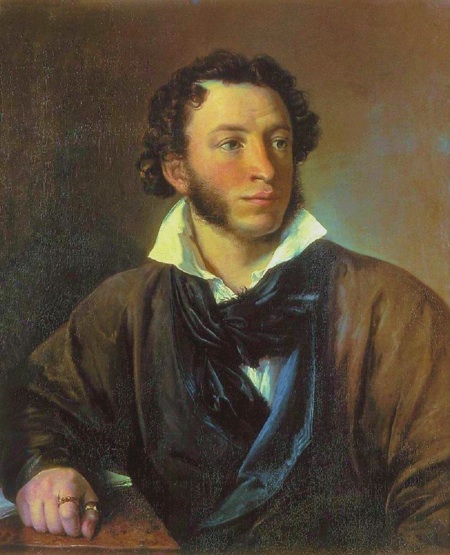
No room, here, to get into the politics of Mary Wollstonecraft Shelley, Aleksandr Pushkin, Barthélemy-Prosper Enfantin, Heinrich Heine, Victor Hugo, Orestes Brownson, and other politically engaged Monomaniacs. Some other time…
RELIGIOUS INNOVATIONS
Whether or not they succeeded in starting a religious movement, the great writers of the Monomaniac generation — notably Thomas Carlyle, Ralph Waldo Emerson, and John Henry Newman — were impelled by a sense of a message for their age, by means of which they hoped to broaden the vision and elevate the ideals of their contemporaries.
Thomas Carlyle was a Scottish satirical writer, essayist, historian and teacher who pioneered what later was dubbed Sage Writing, a genre of creative nonfiction (developed from ancient wisdom literature) wildly popular in the Victorian era. He tried to find a new principle of moral authority and intelligibility for a civilization undergoing deep political unrest and religious doubt. His 1832 novel, Sartor Resartus, influenced Transcendentalism; its articulation of “The Center of Indifference” is an early analysis of the modern Nobrow phenomenon. Carlyle’s three-volume The French Revolution: A History in 1837 called for “heroes” to direct England’s competing “spiritual” forces — i.e., the hopes and aspirations of people in the form the form of ideas and ossified ideologies.
Ralph Waldo Emerson’s 1836 essay Nature introduced Transcendentalism, a romantic (i.e., intuitive, experiential, passionate) continuation of the supposedly too-intellectual rebellions of 19th-century Unitarians and Universalists against traditional Trinitarianism and Calvinist predestinationarianism. Among Transcendentalists’ core beliefs was an ideal spiritual state that “transcends” the physical and empirical and is realized only through the individual’s intuition, rather than through the doctrines of established religions. Though a number of other members of the Monomaniac cohort became Transcendentalists — including Amos Bronson Alcott, Orestes Brownson, Elizabeth Peabody, Charles Lane, and George and Sophia Ripley — younger men and women were instrumental in transforming Emerson’s philosophy into a coherent movement.

John Henry Newman (vicar of the Oxford University Church, later a Catholic convert and Cardinal) was a reactionary concerned with the Anglican Church’s failure to assume its proper spiritual role in English life. He and other members of the Tractarian or Oxford Movement (1833-41) railed away at the holdover attitude of Deist rationalism into which the Church of England had fallen during the eighteenth century, and they asserted the supreme authority of the Church and its traditional doctrines.
Orestes Brownson was a brilliant publicist, first for the Transcendentalists (he was one of the founders of the Transcendental Club), then — after he converted — for Roman Catholicism. In 1836, he founded a church called The Society for Christian Union and Progress and published his first book, New Views of Christianity, Society, and the Church, which combined Transcendental religious views with radical social egalitarianism. He converted in 1844, and from then on argued that only Catholicism could restrain the undisciplined American.
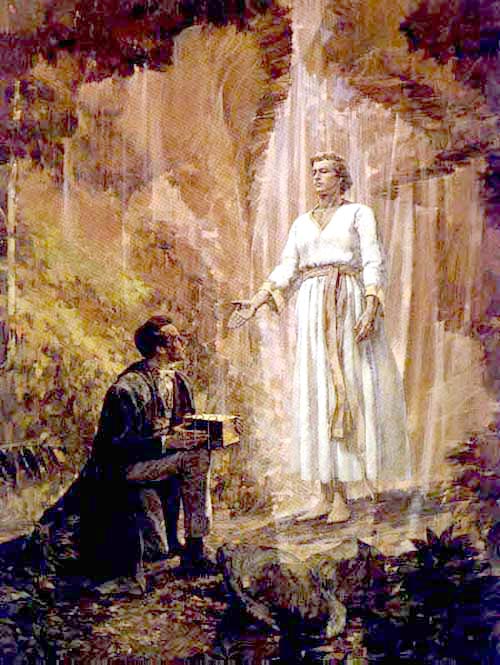
Joseph Smith, Jr. [honorary Monomaniac, born in the cusp year of 1805] and Brigham Young were the first and second prophets of The Church of Jesus Christ of Latter-day Saints, colloquially called Mormons. Smith reported seeing various visions that led him to restore a Christian doctrine that, he claimed, was lost after the early Christian apostles were killed; the term “Mormon” is taken from the title of the Book of Mormon, a sacred text adherents believe to have been translated from golden plates revealed by an angel to Smith. In Ohio, Missouri, and elsewhere, Smith and his followers established organizations that would live a form of Christian communalism. Following Smith’s assassination by a mob in Carthage, Illinois, Young led his followers in an exodus to the western United States, where they founded Salt Lake City in Utah Territory.
In his The Course in Positive Philosophy (1830-42), the French philosopher of science Auguste Comte articulated the epistemological perspective of Positivism — a historically inevitable secular ideology that would succeed the current “stage” during which men questioned authority and religion. Positivism is a quantitative, mathematical basis for decision-making; employing it, people could find solutions to social problems and bring them into force. Comte later developed a “religion of humanity” for positivist societies in order to fulfil the cohesive function once held by traditional worship; the term “altruism” comes from his injunction “vivre pour altrui” (“live for others”).
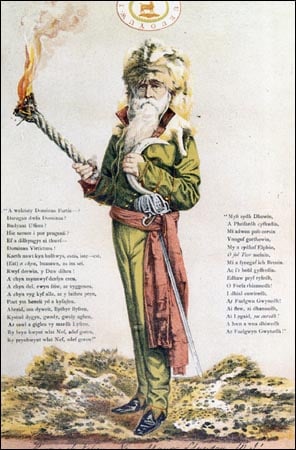
William Price was a Welsh doctor who became convinced that an ancient prophecy indicated that he would liberate his country. He tried to revive what he saw as the religion of the ancient druids; in doing so, he became one of the most prominent proponents of the Neo-druidic movement.
QUASI-RELIGIOUS INNOVATIONS
Phineas Quimby, a mesmerist and mind-over-body healer from Lebanon, N.H., is considered a founder of the New Thought Movement, a loosely allied group of religious denominations, secular membership organizations, authors, philosophers, and individuals who share a set of metaphysical beliefs concerning the effects of positive thinking, the law of attraction, healing, life force, creative visualization, and personal power. Mary Baker Eddy was one of his patients.
This might not exactly count, but: William Cullen Bryant [honorary Monomaniac] , though best known as an American romantic poet and editor of The New York Evening Post, was a militant homeopath (a still hortly disputed form of alternative medicine). He was a lay member of The New York Homeopathic Society in 1834 and President of The Board of Trustees of the New York Homeopathic Medical College from 1860 – 1872.
The Reverend Sylvester Graham [honorary Monomaniac] was an early advocate of dietary reform in the United States. He was most notable for his emphasis on vegetarianism and the temperance movement, as well as dietary habits. Grahamites practiced abstinence from alcohol, frequent bathing, vegetarianism, and a generally sparse lifestyle. Graham also was an advocate of sexual abstinence, especially from masturbation.
Scottish physician James Braid is regarded by many as the first genuine “hypnotherapist” and the “Father of Modern Hypnotism.” It was Braid who first adopted the term “hypnotism” as an abbreviation for “neuro-hypnotism” (sleep of the nerves). Braid was influenced by a fellow member of the Monomaniac cohort, Swiss mesmerist/showman Charles Lafontaine.
COMMUNAL SOCIAL EXPERIMENTS
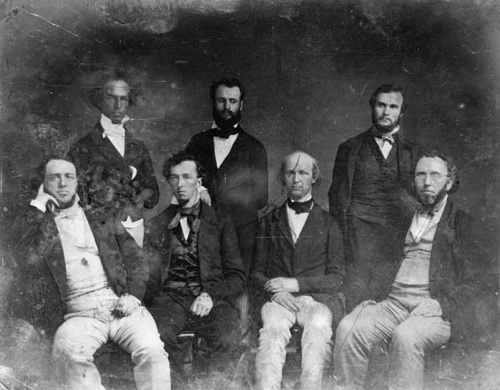
Bostonian Transcendentalists George and Sophia Ripley founded Brook Farm, a utopian colony in nearby West Roxbury. To quote from an essay of mine about Argonaut Follies: George Ripley announced that the object of the colony was “to guarantee the highest mental freedom, by providing all with labor, adapted to their tastes and talents, and securing to them the fruits of their industry… and thus to prepare a society of liberal, intelligent, and cultivated persons [leading] a more simple and wholesome life, than can be led amidst the pressure of our competitive institutions.” […] Nathaniel Hawthorne’s 1852 novel, The Blithedale Romance, is a treatise on the failings of thoroughgoing social reform disguised as a novel set in a West Roxbury utopian colony. In ’41, the 37-year-old Hawthorne was casting about for a place where he would have the leisure and energy to concentrate on his writing. Invited to join Brook Farm, he quit his position in the Boston customhouse and became one of Brook Farm’s founding members; but a few months later, he moved out. Scholars have tended to describe the fictional colony of Blithedale as a dystopia, and Hawthorne as an anti-utopian predecessor to the likes of Zamyatin, Huxley, or Orwell. Certainly, Hawthorne had little sympathy for utopian notions: Coverdale, the semi-autobiographical narrator of Blithedale, reflects ruefully on “our exploded scheme for beginning the life of Paradise anew,” while Zenobia, a character who may have been inspired by Margaret Fuller, laments what she calls the colony’s “effort to establish the one true system.” But read between the lines of Hawthorne’s text and we discover what Fredric Jameson calls “anti-anti-utopianism”: an effort to free the imagination from the paralyzing spell of the quotidian without falling into the error of totalitarianism. [Note that Hawthorne was born on the cusp between the utopian Monomaniacs and the dystopian Autotelics.]
Charles Lane and Bronson and Abigail Alcott, also Transcendentalists, founded the Fruitlands colony. “The consociate family”, as Fruitlands residents referred to themselves, refrained from trade, allowed no personal property, and did not use hired labor. They also eliminated animal products from their diets. According to Lane, who later became a Shaker: “Neither coffee, tea, molasses, nor rice tempts us beyond the bounds of indigenous production… No animal substances neither flesh, butter, cheese, eggs, nor milk pollute our tables, nor corrupt our bodies.” Cotton clothing was forbidden because cotton exploited slave labor, and wool was banned because it came from exploited sheep. Fruitlands failed the winter after it opened, due to food shortages and unrest among the inhabitants. Lane, for example, believed in the renunciation of marriage; the Alcotts did not.
German-born Christian Metz [honorary Monomaniac] emigrated to America, where he co-founded a colony for the Community of True Inspiration, a Pietist sect. He later relocated to Iowa and assisted in the founding of the Amana Colonies. Adin Ballou founded a utopian community named Hopedale on a farm in Massachusetts. Fanny Wright was a Scottish-born freethinker, feminist, abolitionist, labor activist, and social reformer, who emigrated to the US and founded the multiracial Nashoba Commune in Tennessee; its members were slaves, free blacks, and whites. In 1830, Wright freed the Commune’s slaves and accompanied them to the newly liberated nation of Haiti. MORE
Meet the Monomaniacs.
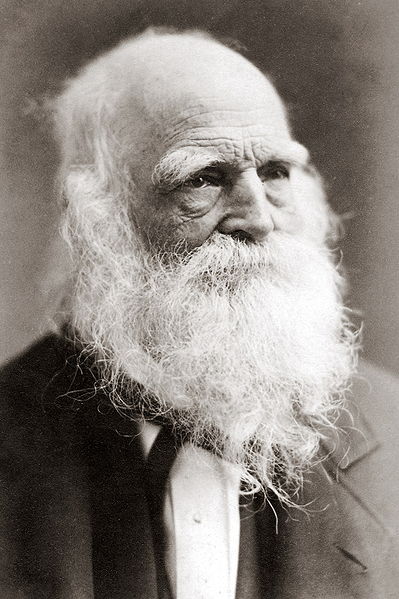
HONORARY MONOMANIACS (born 1794): William Cullen Bryant (American romantic poet, editor of The New York Evening Post, one of the principal authorities on homeopathy; the Modernist and Hardboiled generations were particularly irked by Bryant’s poem “Thanatopsis”: Wolcott Gibbs wrote that the poem is “neither beautiful nor necessary, but hogwash,” while the Algonquin Roundtable had a poker club called the Thanatopsis Literary and Inside Straight Club), Sylvester Graham (health food guru, invented Graham crackers), Christian Metz (German-born utopian colony founder).
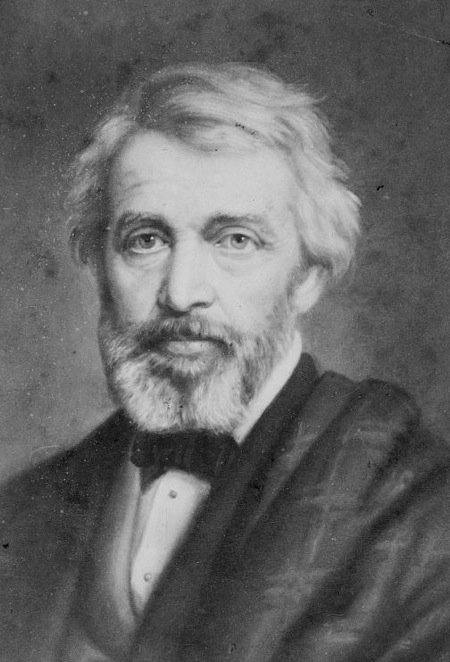
1795: Thomas Carlyle (Scottish writer and historian, The French Revolution; friend of Emerson), Fanny Wright (utopian abolitionist, founded the mixed-race Nashoba Commune), James Braid (Scottish surgeon, hypnotism pioneer), James Knox Polk (11th President of the United States), Barbara Heinemann Landmann (Werkzeug, or Instrument, for the Community of True Inspiration, cofounded Amana Colonies), George Peabody (American businessman and philanthropist), Johns Hopkins (American businessman and philanthropist), King Frederick William IV of Prussia, James Gordon Bennett (founder, The New York Herald), Leopold von Ranke (prominent 19th century German historian). HONORARY ORIGINAL PROMETHEANS: John Keats (English romantic poet), John William Polidori (English writer and physician, known for his associations with the Romantic movement).
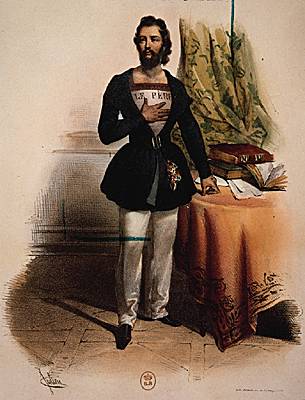
1796: Barthélemy-Prosper Enfantin (Saint-Simonist, cult leader; announced a theory of the relation of man and woman, which would substitute a system of “free love” for the “tyranny of marriage,” declared himself to be the chosen of God), Camille Corot (French landscape painter), Thomas Bulfinch (best known as the author of Bulfinch’s Mythology, an 1881 compilation of expurgated and abridged myths drawn from his previous works: The Age of Fable, or Stories of Gods and Heroes, The Age of Chivalry, or Legends of King Arthur, Legends of Charlemagne, or Romance of the Middle Ages), Sadi Carnot (physicist, 2nd Law of Thermodynamics), Karl Leberecht Immermann (German satirist), Jim Bowie (knife fighter, Alamo combatant), Horace Mann (Massachusetts education reformer, and abolitionist), Tsar Nicholas I of Russia, William MacGillivray (Scottish naturalist and ornithologist), Lambert Adolphe Jacques Quetelet (Belgian mathematician), Davi Canabarro (Gaúcho rebel revolutionary), Mirza Ghalib (poet of Urdu).
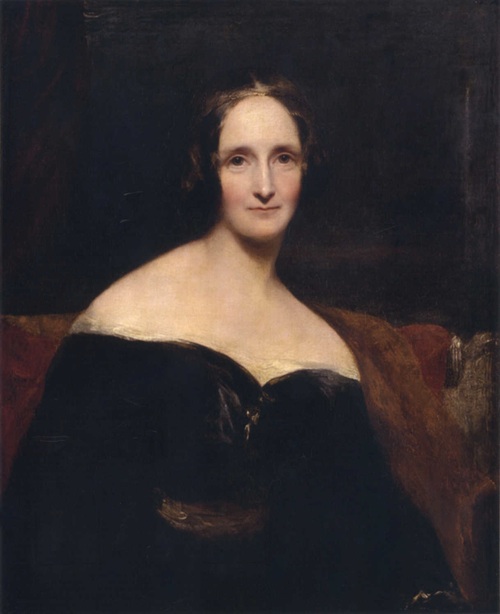
1797: Mary Wollstonecraft Shelley (English writer, Frankenstein, early apocalyptic sci-fi; political radical who rejected both Enlightenment political ideals and the Romantic notion that the poetic or literary imagination can offer an alternative; believed that cooperation and sympathy, particularly as practiced by women in the family, were the ways to reform civil society), Charles Lyell (author of Principles of Geology, which popularized the idea that the earth was shaped by slow-moving forces still in operation today; a close and influential friend of Charles Darwin), Heinrich Heine (German poet, Jewish convert to Christianity; critical of despotism and reactionary chauvinism in Germany, but also of the narrow-mindedness of ordinary people), Sojourner Truth (abolitionist, former slave), Franz Schubert (Austrian pianist and composer, Symphony in C Major), Henry Engelhard Steinway (German-American piano manufacturer), Emperor Wilhelm I of Germany, Alfred de Vigny (French author), José Trinidad Reyes (Honduran Father), Utagawa Kuniyoshi (Japanese woodblock print or ukiyo-e), Paul Delaroche (French academic painter), Joseph Henry (physicist, discovered electromagnetic induction), Adolphe Thiers (first president of France’s Third Republic.
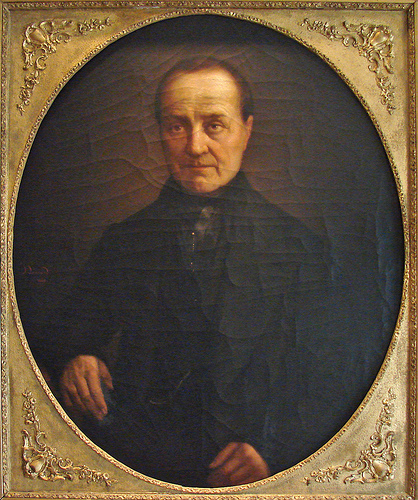
1798: Auguste Comte (French philosopher of science, founder of the discipline of sociology and of the doctrine of positivism; attempted to introduce a “religion of humanity” which was influential in the development of various Secular Humanist organizations; created and defined the term “altruism”), Josiah Warren (the first American anarchist, utopianist), Eugène Delacroix (19th century French painter), Jules Michelet (historian, Histoire de France), Levi Coffin (helped thousands of slaves to freedom), Karl von Holtei (German poet, proto-Vaudevillian), Giacomo Leopardi (despairing Italian classical poet), Macedonio Melloni (physicist, Diathermancy), August Heinrich Hoffmann von Fallersleben (popular German poet and songwriter: “Deutschland, Deutschland über alles”), Adam Mickiewicz (Polish dramatist, one of the greatest Slavic language poets alongside Alexander Pushkin).
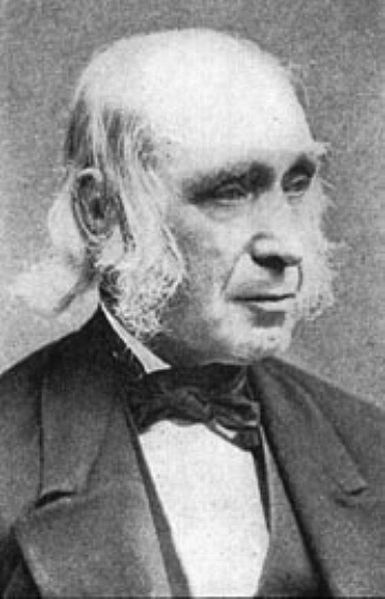
1799: Bronson Alcott (educator, utopianist, Transcendentalist, father of Louisa May Alcott), Honoré de Balzac (prolific French novelist, Comédie Humaine), Aleksandr Pushkin (Russia’s greatest poet), Dred Scott (slave denied freedom by US Supreme Court), René Caillié (explorer, first European to return from Timbuktu), Thomas Hood (poet), Rodolphe Töpffer (Swiss author and cartoonist), Jonathan Walker (slave stealer), Jedediah Smith (American fur trapper, explorer of American West and Southwest), Eliza Acton (English poet and cookery writer), James Bowman Lindsay (Scottish inventor, helped develop incandescent lighting and telegraphy), George Willison Adams (American abolitionist), Thomas Baldwin Marsh (early leader in Latter Day Saint/Mormon movement), John Brown Russwurm (African-American abolitionist, newspaper publisher).
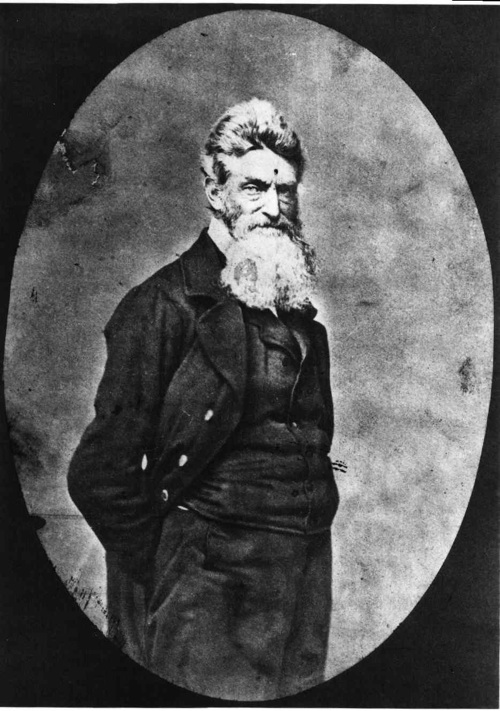
1800: John Brown (American abolitionist, led the raid on Harpers Ferry), Nat Turner (leader of slave insurrection), William Price (Welsh doctor who achieved notoriety for his support of Welsh nationalism, Chartism and his involvement with the Neo-druidic religious movement), Charles Lane (Transcendentalist, utopian, founded Fruitlands with Alcott), Abigail Alcott (activist, social worker, wife of Bronson, Fruitlands utopian), Millard Fillmore (13th President of the United States), Anyos Jedlik (Hungarian physicist, the inventor of the Dynamo), Edwin Chadwick (English social reformer, reformed Poor Laws), Elizabeth Ann Whitney (Mormon leader), Hyrum Smith (Mormon leader), William Fox Talbot (English photographic pioneer, Calotype method of photography), Emperor Ninko of Japan, James Black (creator of the original Bowie knife), Louis Christophe François Hachette (French publisher), George Bancroft (historian, statesman, A History of the United States), Evgeny Baratynsky (Russian Golden Age poet), John Nelson Darby (father of Dispensationalism), Jean-Baptiste-André Dumas (pioneer of organic chemistry), Charles Goodyear (invented rubber vulcanization process), Thomas Babington Macaulay (historian, History of England), Sarah Pugh (abolitionist and suffragette), Helmuth von Moltke (German military strategist).
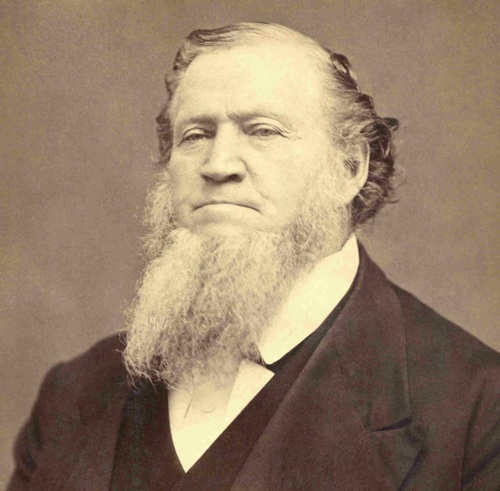
1801: Brigham Young (Second LDS/Mormon prophet, colonizer), John Henry Newman (English Roman Catholic Cardinal, Oxford Movement), Vincenzo Bellini (Iralian composer, I Puritani di Scozia), John Cadbury (chocolatier), Thomas Cole (American landscape painter), David Farragut (America’s first admiral), Samuel Gridley Howe (founder of Perkins Institution), Robert Dale Owen (activist, The Wrong of Slavery), William Procter (co-founder of Procter & Gamble), Gijsbert Haan (creator of the Christian Reformed Church in the US), Jane Welsh Carlyle (letter-writer, wife of essayist Thomas Carlyle (d. 1866), Heber C. Kimball (LDS/Mormon leader), Karl Baedeker (German author and publisher).
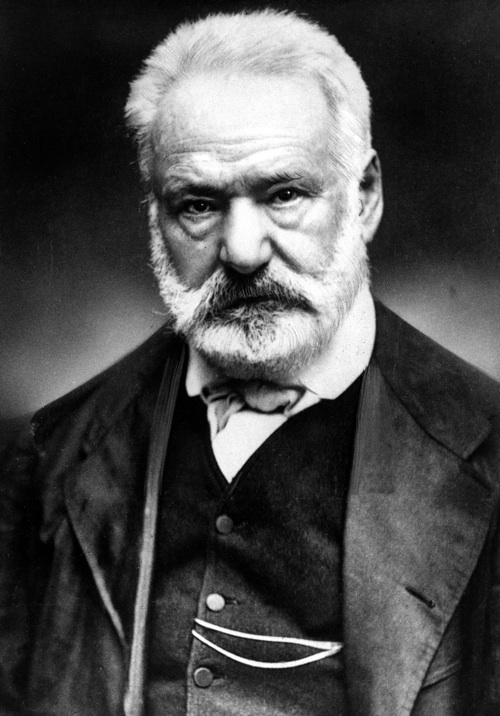
1802: Victor Hugo (French poet, playwright, novelist, essayist, visual artist, statesman, human rights activist, passionate supporter of republicanism, and exponent of the Romantic movement in France; Les Misérables and Notre-Dame de Paris [The Hunchback of Notre-Dame]), George Ripley (Transcendentalism leader, founder of the transcendentalist journal The Dial, originator of Brook Farm utopian colony, editor of the New York Tribune), Phineas P. Quimby (father of New Thought movement), Harriet Martineau (English social theorist, often cited as the first woman sociologist), Dorothea Dix (American activist on behalf of the indigent insane), Alexandre Dumas (père) (French journalist, dramatist, and author of serialized novels, e.g., The Count of Monte Cristo, The Three Musketeers and sequels), Lydia Maria Child (American abolitionist author), Edwin Henry Landseer (British painter), Elijah P. Lovejoy (American abolitionist), Sara Coleridge (British scholar and translator), Richard Upjohn (architect, Gothic revivalist, Trinity Church), Charles Wheatstone (physicist, inventor of the telegraph).
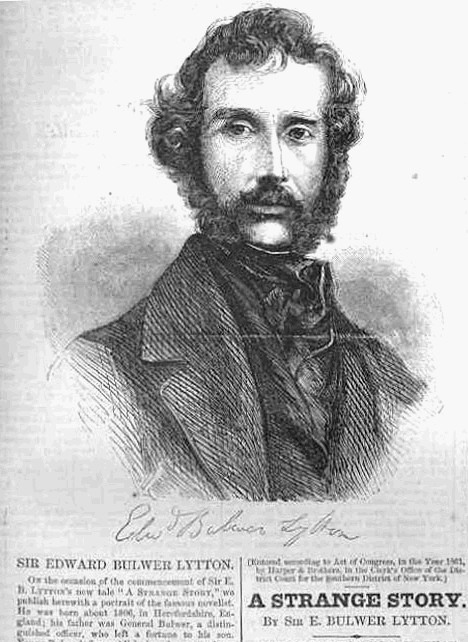
1803: Edward George Bulwer-Lytton (novelist, esotericist, author of occult and science fiction works including The Coming Race; coined the phrases “the great unwashed”, “pursuit of the almighty dollar”, “the pen is mightier than the sword”, and the famous opening line “It was a dark and stormy night”), Ralph Waldo Emerson (Transcendentalist leader, essayist, author of Nature, friend of Carlyle and Thoreau), Sophia Ripley (Transcendentalist, wife of George Ripley, feminist, Brook Farm co-founder), Orestes Brownson (American intellectual, activist, Transcendentalist, Catholic convert), Adin Ballou (proponent of pacifism, socialism and abolitionism, and founder of the utopian Hopedale Community), Charles Lafontaine (influential Swiss mesmerist), Hector Berlioz (French romantic composer), Alexandre Decamps (French romanticist painter), Christian Doppler (physicist, discovered the Doppler Effect), James Gamble (co-founder of Procter & Gamble), Joseph Aloysius Hansom (invented the Hansom Cab), Prosper Mérimée (French novelist, author of Carmen), John Augustus Sutter (explorer, California gold rush), Fyodor Tyutchev (Russian Golden Age poet), Nikolai Yazykov (Russian Golden Age poet).
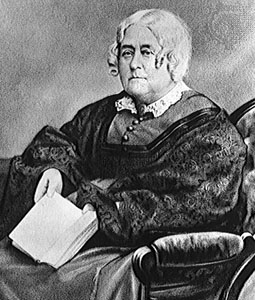
1804 (cuspers): Elizabeth Peabody (Transcendentalist, bookstore owner), George Sand (Amantine Aurore Lucile Dupin, unorthodox French author and socialist, Lélia), John Deere (invented the self-scouring plow), Benjamin Disraeli (UK Prime Minister, author, dandy), Osceola (Seminole Indian chief), Franklin Pierce (14th President of the U.S.), William Barton Rogers (founder, Massachusetts Institute of Technology), Charles Augustin Sainte-Beuve (influential French literary critic), Johann Strauss, Sr. (composer, Täuberl-Walzer), Eugène Sue (prolific French roman-feuilleton novelist), Jim Bridger (American trapper and explorer). HONORARY AUTOTELICS: Nathaniel Hawthorne (American author, friend of Emerson, Brook Farm member, The House of the Seven Gables; author of an important early Argonaut Folly novel), Ludwig Feuerbach (German philosopher, Das Weses des Christentums).

HONORARY MONOMANIACS (born 1805): Joseph Smith, Jr. (American prophet, founder of The Church of Jesus Christ of Latter-day Saints/Mormonism), William Lloyd Garrison (activist, anti-slavery editor of the Liberator).
ADVENTURE WRITERS: Mary Shelley (Top 200: Frankenstein), Alexandre Dumas (Top 200: The Three Musketeers, The Count of Monte Cristo)
